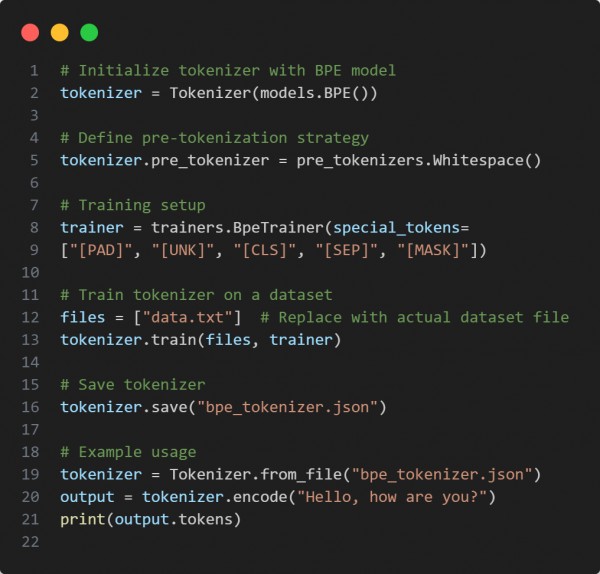You can use Byte-Pair Encoding (BPE) to train a tokenizer for a new foundation model by tokenizing a corpus, applying subword merging, and saving the learned vocabulary.
Here is the code snippet you can refer to:
In the above code, we are using the following key points:
-
BPE Model (models.BPE()): Uses subword merging for efficient tokenization.
-
Whitespace Pre-tokenization (pre_tokenizers.Whitespace()): Splits words before BPE encoding.
-
Trainer (trainers.BpeTrainer()): Learns token merges from the dataset.
-
Serialization (tokenizer.save()): Saves the tokenizer for later use.
Hence, BPE-based tokenization improves language model efficiency by handling rare words through subword segmentation.
 REGISTER FOR FREE WEBINAR
X
REGISTER FOR FREE WEBINAR
X
 Thank you for registering
Join Edureka Meetup community for 100+ Free Webinars each month
JOIN MEETUP GROUP
Thank you for registering
Join Edureka Meetup community for 100+ Free Webinars each month
JOIN MEETUP GROUP